This pub was originally a billiards hall, built in c1907 on a field sandwiched between a house called Sedge Lynn (demolished to make way for a cinema) and Red Gate Farm. Now a grade II listed building, the original billiards hall (and others like this one, in and around Manchester and south London) was erected to remove billiards from its usual setting of the public house and to further the aims of the Temperance Movement.
A photograph and text about The Sedge Lynn.
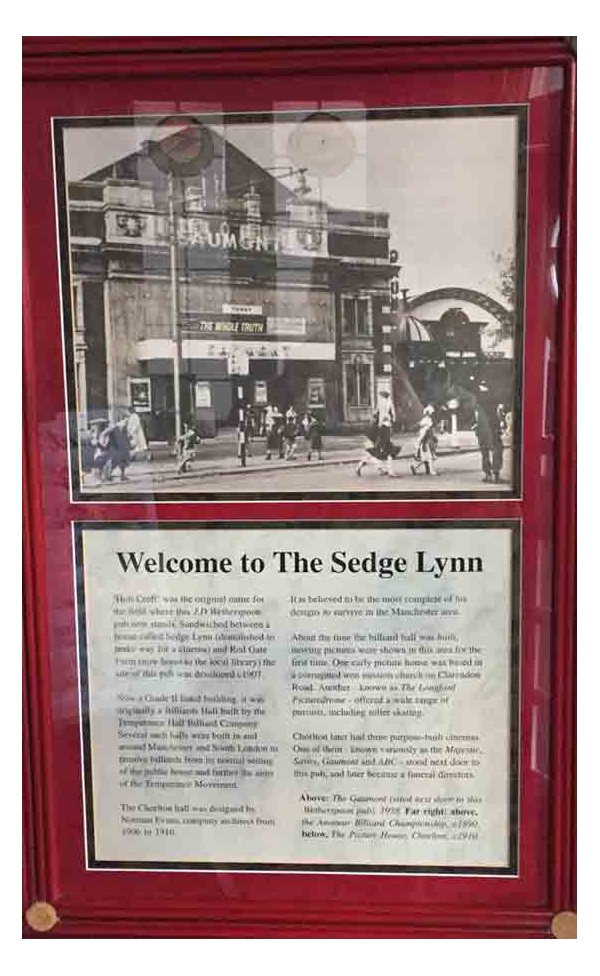
The text reads: Holt Croft was the original name for the field where this J D Wetherspoon pub now stands. Sandwiched between a house called Sedge Lynn (demolished to make way for a cinema) and Red Gate Farm (now home to the local library) the site of this pub was developed c1907.
Now a grade II listed building, it was originally a billiards hall built by the Temperance Hall Billiard Company. Several such halls were built in and around Manchester and south London to remove billiards from its normal setting of the public house and further the aims of the Temperance Movement.
The Chorlton hall was designed by Norman Evans, company architect from 1906 to 1910.
It is believed to be the most complete of his designs to survive in the Manchester area.
About the time the billiard hall was built, moving pictures were shown in the area for the first time. One early picture house was based in a corrugated iron mission church on Clarendon Road. Another – known as The Longford Picturedrome – offered a wide range of pursuits, including roller skating.
Chorlton later had three purpose built cinemas. One of them – known variously as the Majestic, Savoy, Gaumont and ABC – stood next door to this pub, and later became a funeral directors.
Above: the Gaumont (sited next door to this pub), 1958.
A photograph of George Best at the Chorlton Snooker Hall, c1964.
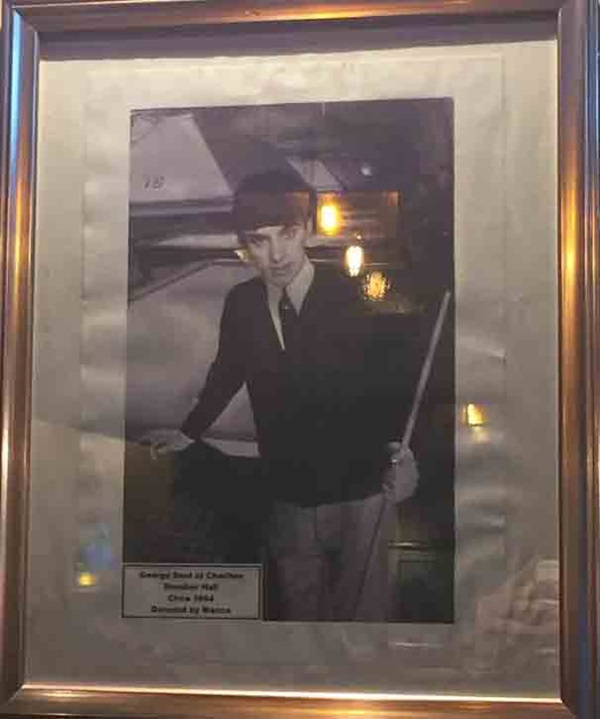
A photograph of the Temperance Billiard Hall, c1958.
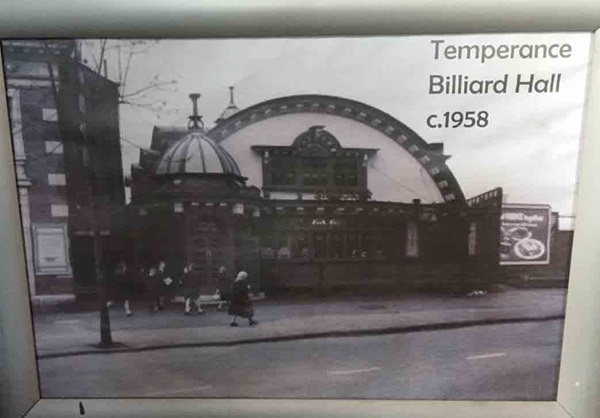
An old photograph of The Sedge Lynn.
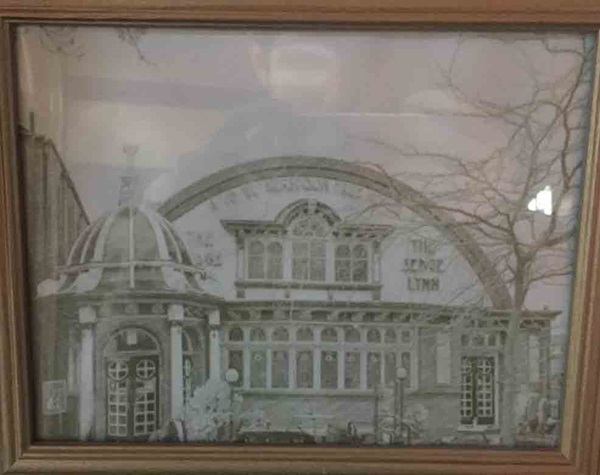
Illustrations and text about temperance.
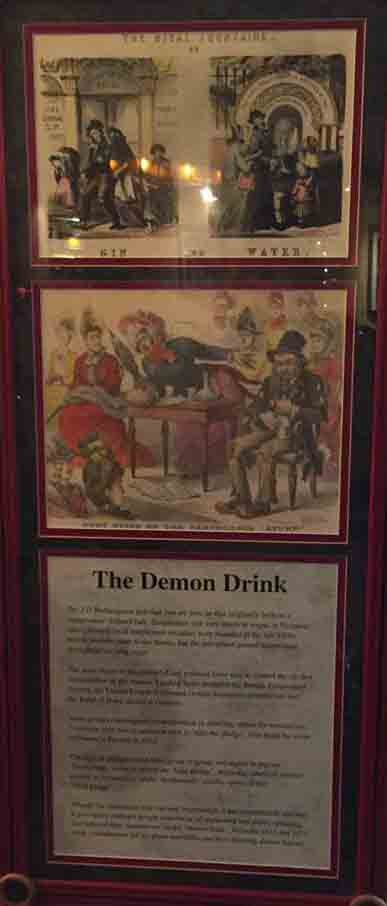
The text reads: The J D Wetherspoon pub that you are now in was originally built as a ‘temperance’ billiard hall. Temperance was very much in vogue in Victorian times. Several local temperance societies were founded in the late 1820s before Victoria came to the throne, but the movement gained momentum throughout her long reign.
The main thrust of this powerful and political force was to control the alcohol consumption of the names. Leading lights included the British Temperance Society, the United Kingdom Alliance (which demanded prohibition) and the Band of Hope, aimed at children.
Some groups campaigned for moderation in drinking, others for teetotalism. A popular ploy was to persuade men to ‘take the pledge’, first made by seven workmen in Preston in 1832.
The type of pledge varied from group to group and region to region. Northerners seem to favour the long pledge, depriving others of alcohol as well as themselves, while southerners usually opted for the short pledge.
Though the movement was vast and fragmented, it had considerable success. It gave many ordinary people experience of organising and public speaking, and reduced their dependence on the ‘demon drink’. Between 1831 and 1931 spirit consumption fell by about four fifths and beer drinking almost halved.
A print and text about Sir John Alcock and Sir Arthur Whitten Brown.
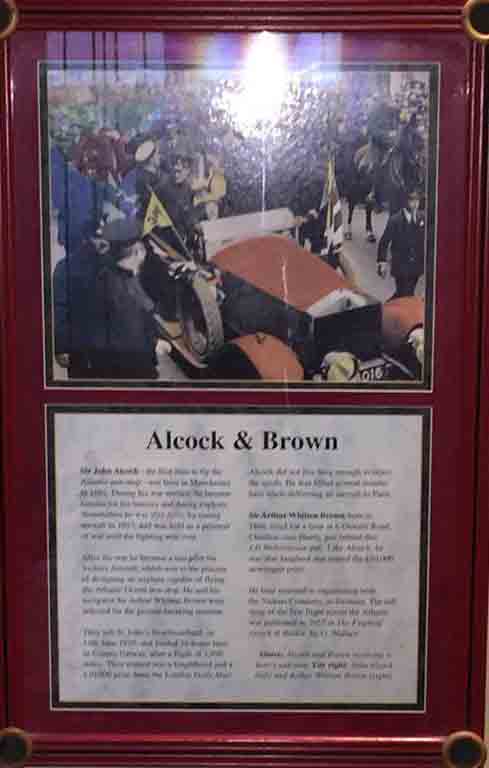
The text reads:
Sir John Alcock – the first man to fly the Atlantic non-stop – was born in Manchester in 1892. During his war service, he became famous for his bravery and daring exploits. Nonetheless he was shot down by enemy aircraft in 1917, and was held as a prisoner of war until the fighting was over.
After the war, he became a test pilot for Vickers Aircraft, which was in the process of designing an airplane capable of flying the Atlantic Ocean non-stop. He and his navigator Sir Arthur Whitton Brown were selected for the ground-breaking mission.
They left St John’s Newfoundland, on 14 June 1919, and landed 16 hours later on County Galway, after a flight of 1,390 miles. Their reward was a knighthood and a £10,000 prize from the London Daily Mail.
Alcock did not live long enough to enjoy the spoils. He was killed several months later while delivering an aircraft to Paris.
Sir Arthur Whitten Brown, born in 1886, lived for a time at 6 Oswald Road, Chorlton-cum-Hardy, just behind this J D Wetherspoon pub. Like Alcock, he was also knighted and shared the £10,000 newspaper prize.
He later returned to engineering with the Vickes Company, in Swansea. The full story of the first flight across the Atlantic was published in 1955 in The Flight of Alcock and Brown by G Wallace.
Above : Alcock and Brown receiving a hero’s welcome
Far right: John Alcock (left) and Arthur Whitten Brown (right).
An illustration and text about crime and punishment.
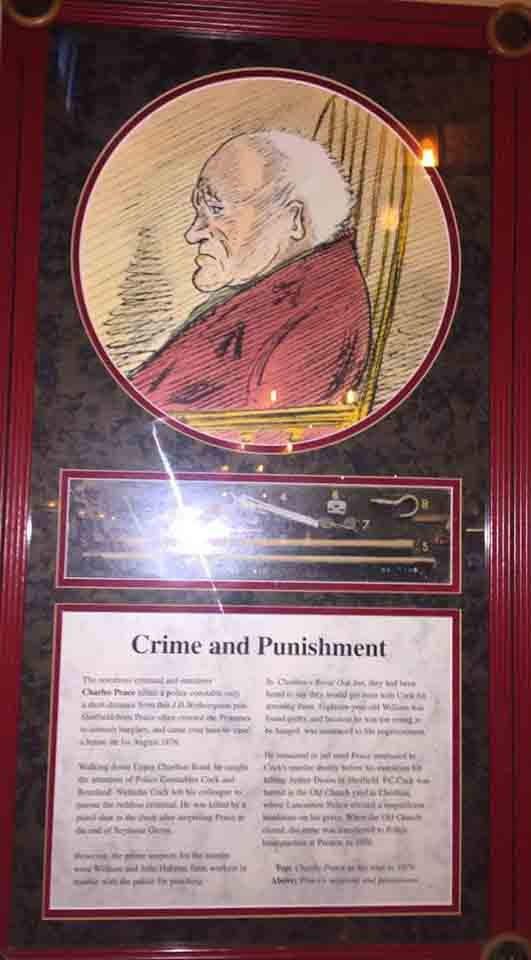
The text reads: The notorious criminal and murderer Charles Peace killed a police constable only a short distance from this J D Wetherspoon pub. Sheffield-born Peace often crossed the Pennines to commit burglary, and came over here on 1 August 1876.
Walking down Upper Chorlton Road, he caught the attention of police constables Cock and Beanland. Nicholas Cock left his colleague to pursue the ruthless criminal. He was killed by a pistol shot in the chest after surprising Peace at the end of Seymour Grove.
However, the prime suspects for the murder were William and John Habron, farm workers in trouble with the police for poaching.
In Chorlton’s Royal Oak Inn, they had been heard to say they would get even with Cock for arresting them. Eighteen year old William was found guilty, and because he was too young to be hanged, he was sentenced to life imprisonment.
He remained in jail until Peace confessed to Cock’s murder shortly before his execution for killing Arthur Dyson in Sheffield. PC Cock was buried in the old church in Chorlton, where Lancashire police erected a magnificent headstone on his grave. Where the old church closed, the stone was transferred to police headquarters at Preston in 1956.
Top: Charlie Peace at his trial in 1879
Above: Peace’s weapons and possessions.
A photograph of Chorlton-cum-Hardy, c1918.
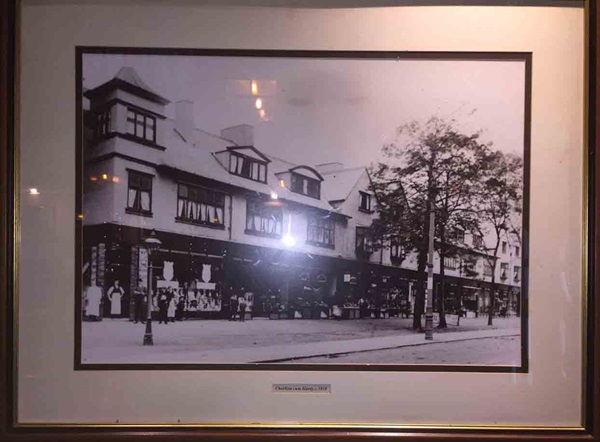
Prints of Hough End and Barlow Hall.
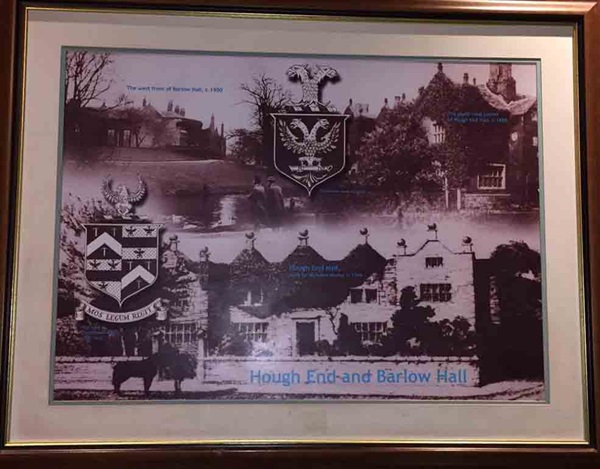
External photograph of the building – main entrance.
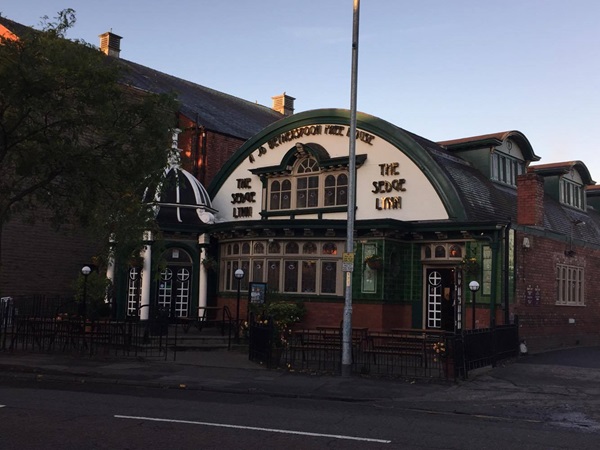
If you have information on the history of this pub, then we’d like you to share it with us. Please e-mail all information to: pubhistories@jdwetherspoon.co.uk